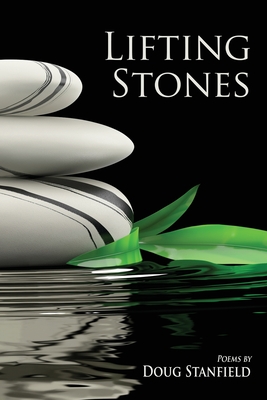Lifting Stones: Poems

Lifting Stones: Poems
Lifting Stones is an autobiography of sorts; a travel journal where the poet travels in nature and into memories of love, hope, grief, and loss. Steve Jobs once said, "You can't connect the dots looking forward. You can only connect them looking backwards." In this book, then, the poet connects the dots of his life by looking back along the trail, seeing clearly for the first time, stacking personal, grounded poems like rock cairns left for the next traveler.
Lifting Stones is an autobiography of sorts; a travel journal where the poet travels in nature and into memories of love, hope, grief, and loss. "Life can only be understood backwards; but it must be lived forwards," wrote S ren Kierkegaard, and this is the genesis of Stanfield's collection. His poems understand a life by looking back along the trail, seeing clearly for the first time, stacking personal, grounded word formations like rock cairns left for the next traveler: a way for stones, and words, to live forward.
Lifting Stones is an autobiography of sorts; a travel journal where the poet travels in nature and into memories of love, hope, grief, and loss. "Life can only be understood backwards; but it must be lived forwards," wrote S ren Kierkegaard, and this is the genesis of Stanfield's collection. His poems understand a life by looking back along the trail, seeing clearly for the first time, stacking personal, grounded word formations like rock cairns left for the next traveler: a way for stones, and words, to live forward.
Lifting Stones is an autobiography of sorts; a travel journal where the poet travels in nature and into memories of love, hope, grief, and loss. "Life can only be understood backwards; but it must be lived forwards," wrote S ren Kierkegaard, and this is the genesis of Stanfield's collection. His poems understand a life by looking back along the trail, seeing clearly for the first time, stacking personal, grounded word formations like rock cairns left for the next traveler: a way for stones, and words, to live forward.
Lifting Stones is an autobiography of sorts; a travel journal where the poet travels in nature and into memories of love, hope, grief, and loss. "Life can only be understood backwards; but it must be lived forwards," wrote S ren Kierkegaard, and this is the genesis of Stanfield's collection. His poems understand a life by looking back along the trail, seeing clearly for the first time, stacking personal, grounded word formations li
PRP: 117.42 Lei
Acesta este Pretul Recomandat de Producator. Pretul de vanzare al produsului este afisat mai jos.
105.68Lei
105.68Lei
117.42 LeiIndisponibil
Descrierea produsului
Lifting Stones is an autobiography of sorts; a travel journal where the poet travels in nature and into memories of love, hope, grief, and loss. Steve Jobs once said, "You can't connect the dots looking forward. You can only connect them looking backwards." In this book, then, the poet connects the dots of his life by looking back along the trail, seeing clearly for the first time, stacking personal, grounded poems like rock cairns left for the next traveler.
Lifting Stones is an autobiography of sorts; a travel journal where the poet travels in nature and into memories of love, hope, grief, and loss. "Life can only be understood backwards; but it must be lived forwards," wrote S ren Kierkegaard, and this is the genesis of Stanfield's collection. His poems understand a life by looking back along the trail, seeing clearly for the first time, stacking personal, grounded word formations like rock cairns left for the next traveler: a way for stones, and words, to live forward.
Lifting Stones is an autobiography of sorts; a travel journal where the poet travels in nature and into memories of love, hope, grief, and loss. "Life can only be understood backwards; but it must be lived forwards," wrote S ren Kierkegaard, and this is the genesis of Stanfield's collection. His poems understand a life by looking back along the trail, seeing clearly for the first time, stacking personal, grounded word formations like rock cairns left for the next traveler: a way for stones, and words, to live forward.
Lifting Stones is an autobiography of sorts; a travel journal where the poet travels in nature and into memories of love, hope, grief, and loss. "Life can only be understood backwards; but it must be lived forwards," wrote S ren Kierkegaard, and this is the genesis of Stanfield's collection. His poems understand a life by looking back along the trail, seeing clearly for the first time, stacking personal, grounded word formations like rock cairns left for the next traveler: a way for stones, and words, to live forward.
Lifting Stones is an autobiography of sorts; a travel journal where the poet travels in nature and into memories of love, hope, grief, and loss. "Life can only be understood backwards; but it must be lived forwards," wrote S ren Kierkegaard, and this is the genesis of Stanfield's collection. His poems understand a life by looking back along the trail, seeing clearly for the first time, stacking personal, grounded word formations li
Detaliile produsului








